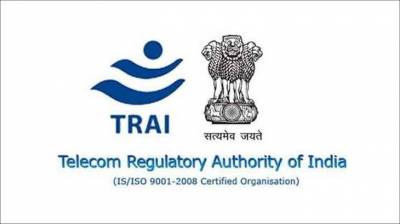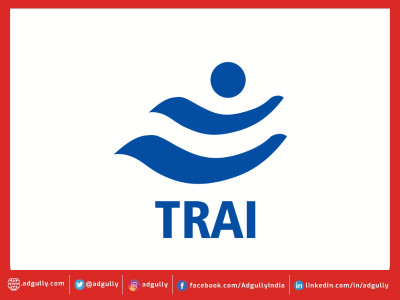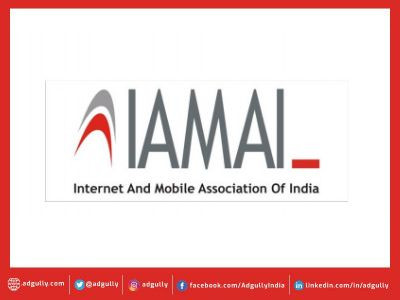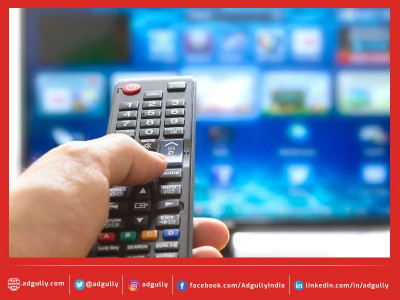TRAI moves to review TV audience measurement & ratings in India
The Telecom Regulatory Authority of India (TRAI) has issued a consultation paper to solicit the views of stakeholders on regulatory initiatives/ measures to be taken to make TV rating services more accurate, widely acceptable. The consultation paper also explores possibilities of use of new technologies to enhance credibility, transparency, neutrality and fairness in the TV rating in India.
Television audience measurement has been in a developing phase, with advanced technologies being used and updated to maintain transparency and improve credibility of the system. Further, over the years new issues have emerged which need to be addressed. Several concerns relating to neutrality and reliability of the existing rating system have been raised by stakeholders, which necessitated a need to review of existing Television Audience Measurement and Ratings system in India. Further, issues relating to panel expansion and panel tampering have surfaced, which need special attention because they have significant impact on the TV channel ratings.
Written comments are invited from the stakeholders by January 2, 2019, while counter comments, if any, can be submitted by January 16, 2019.
BARC’s performance
The consultation paper seeks stakeholders’ views on BARC’s performance, raising issues such as:
- Whether BARC has been able to accomplish the purpose with transparency and without any bias for which it has been established?
- Whether the present shareholding/ ownership pattern of BARC ensures adequate representation of all stakeholders to maintain its neutrality and transparent TV ratings? How can its credibility and neutrality can be enhanced further?
Need for competition in rating services
The consultation paper will also mull over whether there is need to create competition in rating services. Although there is no restriction on the number of firms entering into rating services in India, as on date television audience measurement is being done by only one agency, that is, BARC.
The main issue for consideration is as to whether there is a need to promote competition in television rating services to ensure transparency, neutrality and fairness to give TAM rating? What regulatory initiatives/ measures can be taken to make TV rating services more accurate and widely acceptable?
BARC methodology
BARC’s methodology is also under the scanner. BARC uses a people-meter, namely, BAR-o-Meter for collection of viewership data. Audio Watermarking technology embeds audio watermarks in video programme prior to upload and broadcast. These watermarks are not audible to the human ear, but can easily be detected and decoded using dedicated hardware or software. The watermark is broadcast along with the programme.
Though BARC publishes ratings as point estimates, in reality they are interval and range estimates. The range depends on the relative error associated with each estimate. The factors that affect relative error are sample size and the reach. Therefore, new methods need to be developed which would minimise the relative errors.
The consultation paper raises questions like:
- Is the current audience measurement technique used by BARC apposite?
- Does broadcasting programmes that are out of their category or in different language for some time during the telecast affect the TAM rating? If so, what measures should be adopted to curb it?
Panel Tampering/ Infiltration
Panel Tampering/ Infiltration remains a legacy issue for television audience measurement in India. In panel tampering, incentives are provided to people in the panel homes for watching a particular channel that would affect ratings. Panel infiltration has a significant impact when the panel size is smaller. With the increase in panel size, infiltration of panel homes becomes challenging.
Additionally, one of the biggest challenges has been the absence of any specific law through which the agents/ suspects involved in panel tampering/ infiltration could be penalised.
BARC has filed FIRs in various police stations against the agents/ suspects involved in panel tampering/ infiltration. However, BARC efforts to mitigate panel tampering/ infiltration have been hampered due to absence of any legal framework.
Also, present MIB guidelines governing the media sector and audience measurement do not address Panel Tampering/ Infiltration. One method could be to provide special provision in the existing guidelines to address panel tampering issue. Another method could be that the broadcasters give authorisation to BARC for filing complaints on their behalf.
Panel Expansion
Panel size is the number of homes, drawn from samples collected during establishment survey, where the audience measurement device is placed. It is an important parameter that determines the accuracy of statistical exercise. The panel size should be representative of age, socio-economic class, gender, working status, delivery platforms and geographical coverage (both urban & rural markets).
As per information available, by the end of 2015, BARC had attained a panel size of 22,000, but as per the provisions of policy guidelines, panel size should be reaching 50,000 by the end of 2018. With 2018 almost coming to an end, as per information available, BARC is expected to achieve a panel size of 44,000 by the end of 2018. The consultation paper states, “With such small panel size, it becomes really difficult to predict/ establish true measurement data, especially, for a country of about 1.3 billion people along with diversity.”
Issues for consultation include:
- Can TV rating truly based on limited panel homes be termed as representative?
- What should be done to reduce impact of manipulation of panel home data on overall TV ratings?
- What should be the panel size both in urban and rural India to give true representation of audience?
- What method/ technology would help to rapidly increase the panel size for television audience measurement in India? What will be the commercial challenge in implementing such solutions?
- Should DPOs be mandated to facilitate collection of viewership data electronically subject to consent of subscribers to increase data collection points for better TRP ratings?
- What percentage of STB supports transferring viewership data through establishing a reverse path/ connection from STB? What will be the additional cost if existing STBs without return path are upgraded?
- What method should be adopted for privacy of individual information and to keep the individual information anonymous?
- What should be the level/ granularity of information retrieved by the television audience measurement agency from the panel homes so that it does not violate principles of privacy?















Share
Facebook
YouTube
Tweet
Twitter
LinkedIn